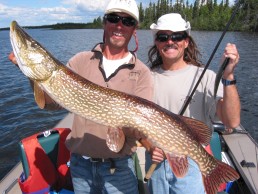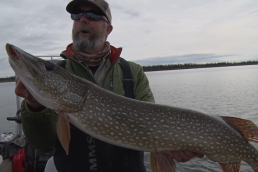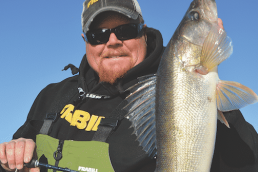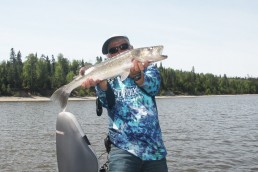Saskatchewan Smorgasbord
SHARE THIS POST
Some of my most memorable fishing forays have been to the northern wilds of Saskatchewan. Remote stillness, unspoiled natural beauty and fabulous fishing await visitors seeking an escape from the hectic lifestyle and workaday world of home. Viewed from the overhead perspective of a larger airplane, or the up-close-and personal treetop view from a float plane, the waterscape stretches to infinity and beyond—a vast network of flowing water connecting thousands of lakes, large and small, teeming with fish.
Saskatchewan’s larger lakes are legendary: Athabasca, Tazin, Scott, Selwyn, Wollaston, Reindeer, Hatchet, Lac La Ronge and more are household names offering huge pike and lake trout—and some bonus Arctic grayling. Mid-size waters like Misaw or Waterbury may not enjoy the same notoriety but nevertheless offer some of the same fantastic opportunities. Walleyes are more likely found in smaller, nearby fly-out lakes, although some lurk in bays and rivers flowing into these gigantic waters. The farther south you look toward mid-province, the more prominent walleyes become in milder environments.
I’ve always felt that the pike of far northern Saskatchewan grow to be big animals. Fish of 44 to 48 inches are common, compared to other areas where 40- to 42-inch pike tend to be your top-out potential. Still great fish, but nothing like the broad-backed, powerful giants of the northern tundra.
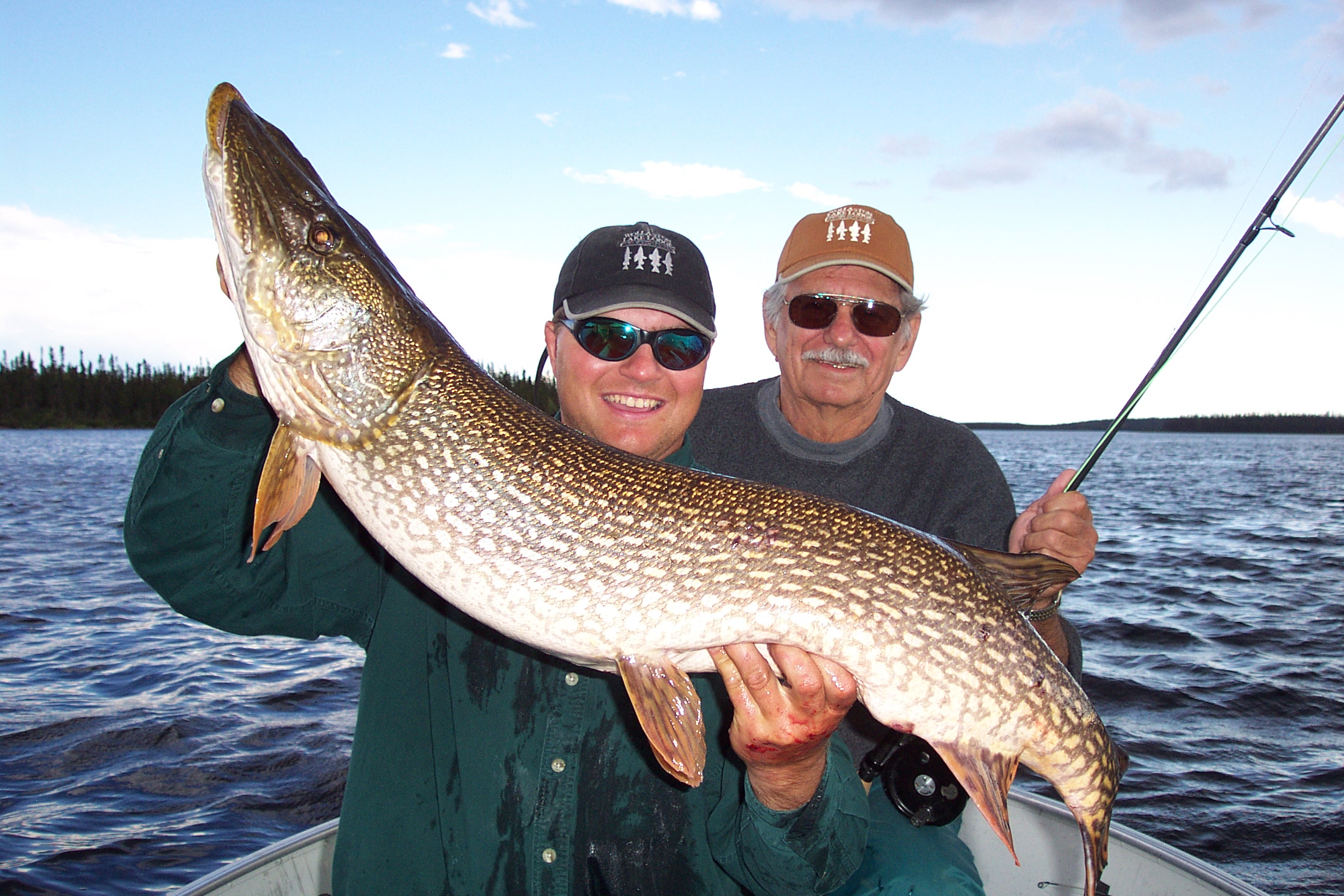
I also find that being versatile catches more and bigger pike. When I started exploring these waters nearly 50 years ago, I, like many others, had the misconception that all you needed to catch pike was a wobbling spoon. Now, I always pack a combo of spoons, crankbaits, jigs and softbaits, big softbaits, large spinnerbaits, straight-shaft spinners, flies and more. Show the fish a variety of lures to see what they prefer in any given local on any given day.
Somewhat surprisingly, preferences vary from lake to lake and at different times of the year. That may result somewhat from lodge owners suggesting that their guests throw certain lures, tipping the scales in favor of most-used, most-struck baits. In my personal experience, topwaters produce loads of savage strikes but have lower percentages for hookups; pike just seem to have a harder time connecting to topwaters than other lures running just below the surface. You may disagree. That’s fishing.
Lake trout of the far North also grow to be beasts; 15- to 20-pounders are common, and fish of 30 pounds and more are not unrealistic. When lakers are shallow in spring, simply trolling large, wobbling spoons like Dardevle Huskies, big crankbaits or lures of the Flatfish/Kwikfish persuasion fit the bill. Once they are driven deeper by warming water temperatures in summer, weighting your line with Rubbercor or inline Bead Chain sinkers becomes necessary, although some anglers prefer trolling with Dipsey Divers to get their lures down to 40 feet or so. Three-way rigs trailing large flutterspoons or crankbaits probe depths down to 60 or 80 feet, with the odds going to wire line or braided superlines to retain sensitivity in deep water. Lift their heavy, 6- to 8-ounce bell sinkers on and off bottom as you probe the depths.
Are you enjoying this post?
You can be among the first to get the latest info on where to go, what to use and how to use it!
As the fish move shallow again to spawn at the tail end of the open-water season in fall, it’s hard to beat casting jigs and softbaits atop shallow reefs. Just use lighter versions of the 1- to 3-ounce white bucktail or soft-plastic-bodied jigs you vertically jigged in deep water during summer. Jigs produce loads of lake trout all year long, although really big trout seem to be caught on oversized artificials, all else being equal.
Arctic grayling inhabit the rivers, riffles and rapids flowing into far-North lakes. Walk the shoreline tossing flies, #0 or #1 straight-shaft spinners, or bobber-and-jig rigs along current breaks.
While the landscape may different from that of farther-North latitudes, the plains of Saskatchewan offer equally fabulous fishing for those who prefer to trailer their own boats and explore their potential captaining their own ship. Massive impoundments like Diefenbaker and Tobin—both part of the vast Saskatchewan River system—offer huge walleyes and pike in prairie environments similar to Missouri River impoundments back in the States. Diefenbaker even hosts huge rainbow trout. Add Last Mountain—another monster walleye lake—to the mix, and you have more surface acreage available than you can explore.

Use the same tackle here that you’d use on other plateau reservoirs: jigs and soft plastics, bottom bouncers-spinners-‘crawlers, livebait rigs with leeches, trolled crankbaits—your normal array of walleye catchers. In farther-north waters, however, you seldom need more than an 1/8- to 1/4-ounce jig tipped with a 3- to 4-inch softbait to seal the deal for walleyes. Fish them at river mouths, river shoals/holes, or below waterfalls and be prepared for as much as 100-fish days. Perhaps add a # 7 Jigging Rap to the menu for another vertical jigging option.
To the south, you can even tie into some great largemouth bass in Boundary Dam Reservoir in the far southeastern corner of the province. Hard to believe that so many species and fisheries are available in the same region, but the province is so vast that the landform, scenery and diverse fishing habitat offers a kaleidoscope of angling opportunities just waiting to be experienced and explored.
MWO
SHARE THIS POST
Did you enjoy this post?
You can be among the first to get the latest info on where to go, what to use and how to use it!
Dave Csanda
Dave Csanda has enjoyed 40 years in the fishing communications industry at In-Fisherman, Angling Edge and now, as editor of MidWest Outdoors. He is an inductee of both the Minnesota and National Fresh Water Fishing Halls of Fame.
